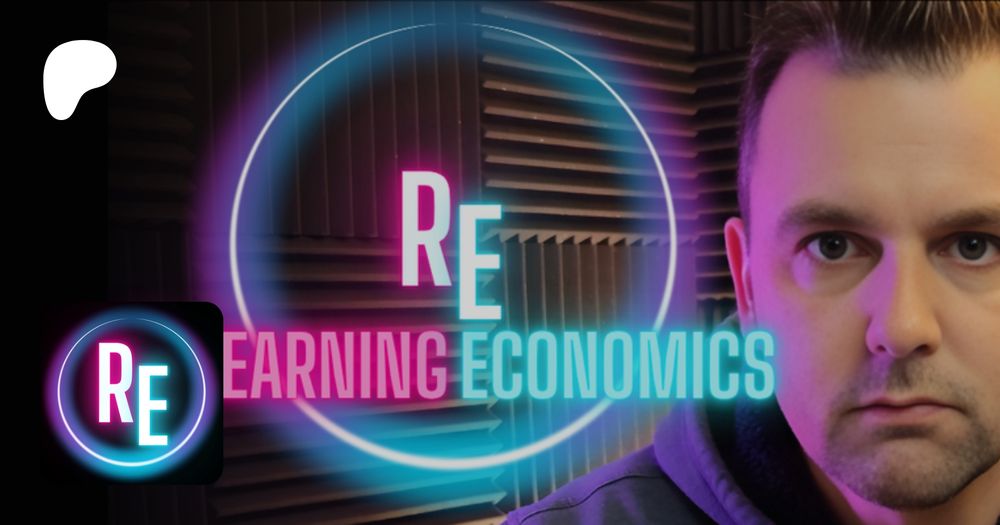
https://www.relearningeconomics.com
They misunderstand it because their models assume it away.
If you want to understand the real economy, follow the balance sheets, not the textbooks.
🧵12/12
www.patreon.com/c/relearning...

They misunderstand it because their models assume it away.
If you want to understand the real economy, follow the balance sheets, not the textbooks.
🧵12/12
www.patreon.com/c/relearning...
📎 Minsky (1986)
🧵11/12
📎 Minsky (1986)
🧵11/12
Money is a set of balance-sheet relationships.
Its creation is institutional.
Its effects are distributional.
And the real constraint is resources, not financial assets.
🧵10/12
Money is a set of balance-sheet relationships.
Its creation is institutional.
Its effects are distributional.
And the real constraint is resources, not financial assets.
🧵10/12
Because the models came first, and reality was squeezed in later.
It's easier to bolt on frictions than rethink the core assumptions about equilibrium, rational expectations, and loanable funds.
🧵9/12
Because the models came first, and reality was squeezed in later.
It's easier to bolt on frictions than rethink the core assumptions about equilibrium, rational expectations, and loanable funds.
🧵9/12
It’s still framed as too much money chasing too few goods, ignoring energy, supply chains, administered prices, and global shocks.
Money is blamed because it's the simplest story.
📎 Storm (2022)
🧵8/12
It’s still framed as too much money chasing too few goods, ignoring energy, supply chains, administered prices, and global shocks.
Money is blamed because it's the simplest story.
📎 Storm (2022)
🧵8/12
All that changes is the form of the private sector's assets, not the government’s ability to spend.
The accounting moves, the capacity doesn't.
🧵7/12
All that changes is the form of the private sector's assets, not the government’s ability to spend.
The accounting moves, the capacity doesn't.
🧵7/12
A currency-issuing government doesn't borrow like a household.
It spends by creating new liabilities and taxes by deleting them.
Bond sales just swap one type of private asset for another.
📎 Kelton (2020)
🧵6/12
A currency-issuing government doesn't borrow like a household.
It spends by creating new liabilities and taxes by deleting them.
Bond sales just swap one type of private asset for another.
📎 Kelton (2020)
🧵6/12
This imaginary person is doing the work actual balance sheets do.
It's sh#tty physics envy. Nothing more than that.
🧵5/12
This imaginary person is doing the work actual balance sheets do.
It's sh#tty physics envy. Nothing more than that.
🧵5/12
Central banks are clear, loans create deposits, the need for reserves comes after and reserves are supplied as needed.
The whole sequence runs opposite of what most economists still learn.
📎 Bank of England (2014)
🧵4/12
Central banks are clear, loans create deposits, the need for reserves comes after and reserves are supplied as needed.
The whole sequence runs opposite of what most economists still learn.
📎 Bank of England (2014)
🧵4/12
They create new deposits when they make a loan, literally by typing numbers into an account.
What actually constrains them is capital rules, regulation, and credit risk.
📎 BIS (2016)
🧵3/12
They create new deposits when they make a loan, literally by typing numbers into an account.
What actually constrains them is capital rules, regulation, and credit risk.
📎 BIS (2016)
🧵3/12
Nice f#$king story.
Also wrong.
🧵2/12
Nice f#$king story.
Also wrong.
🧵2/12
The warning signs are always there if you’re willing to look.
Check out all my blogs out on this topic an more on my Patreon:
🧵8/8
www.patreon.com/c/relearning...

The warning signs are always there if you’re willing to look.
Check out all my blogs out on this topic an more on my Patreon:
🧵8/8
www.patreon.com/c/relearning...
It’s the household mortgage bubble, not the deficit, that crashes economies.
🧵7/8
It’s the household mortgage bubble, not the deficit, that crashes economies.
🧵7/8
DSGE model frameworks treat debt as neutral or irrelevant.
The cycle is driven by leverage, but the models are blind to it.
🧵6/8
DSGE model frameworks treat debt as neutral or irrelevant.
The cycle is driven by leverage, but the models are blind to it.
🧵6/8
Stability breeds complacency, risk-taking rises, debt loads grow, until the system tips.
🧵5/8
Stability breeds complacency, risk-taking rises, debt loads grow, until the system tips.
🧵5/8

